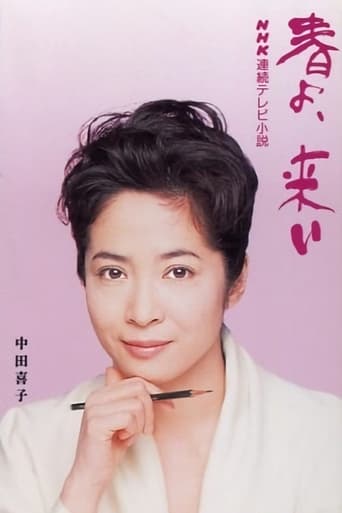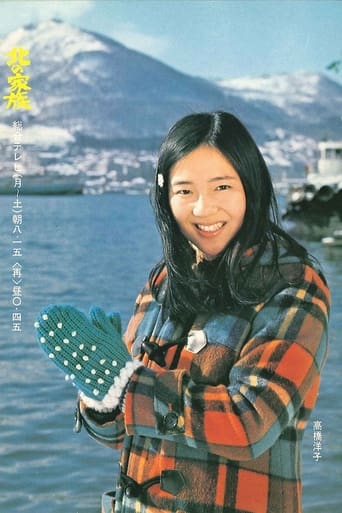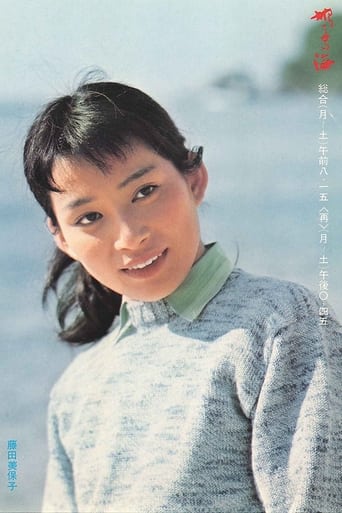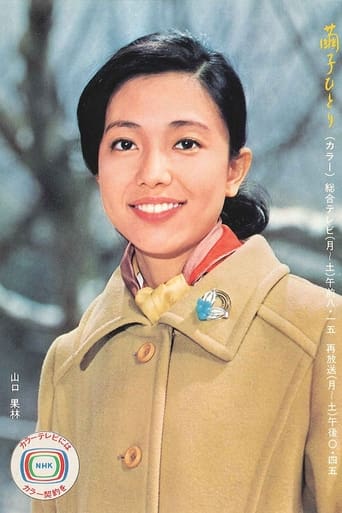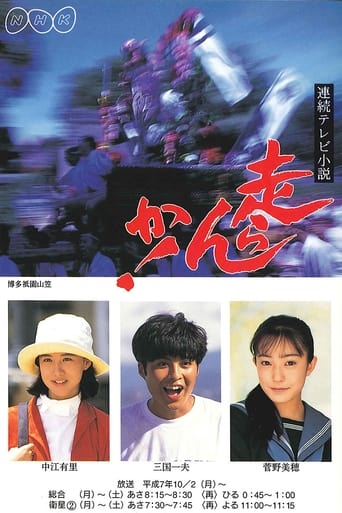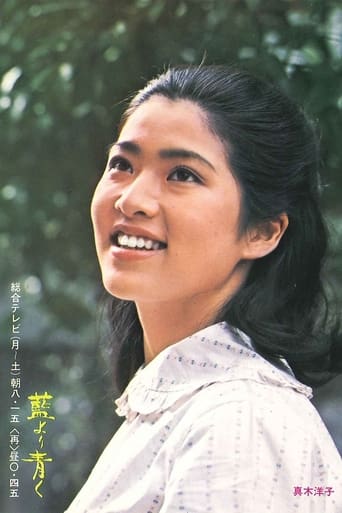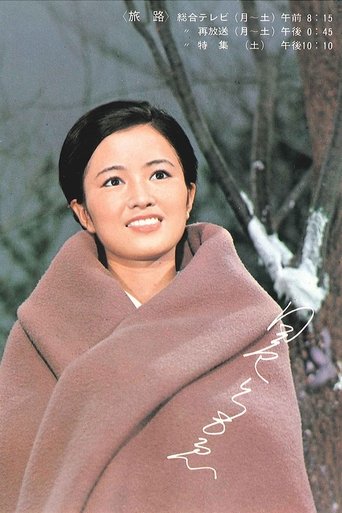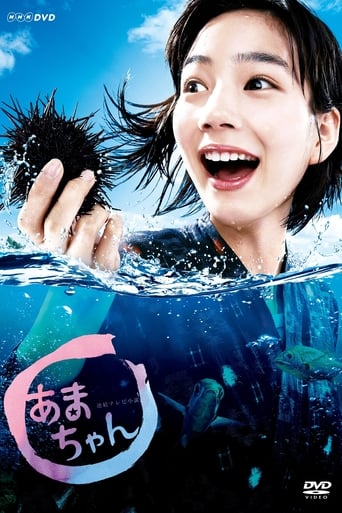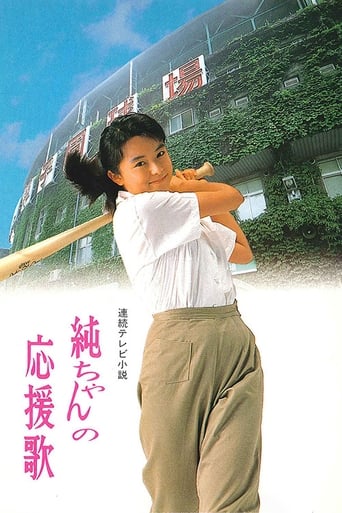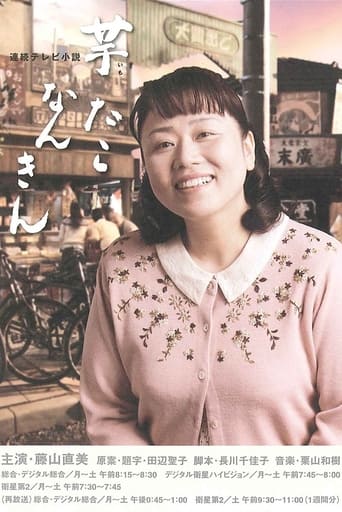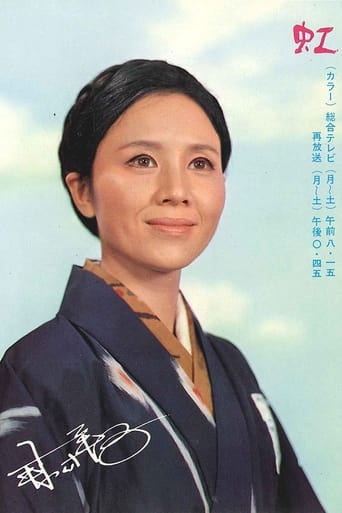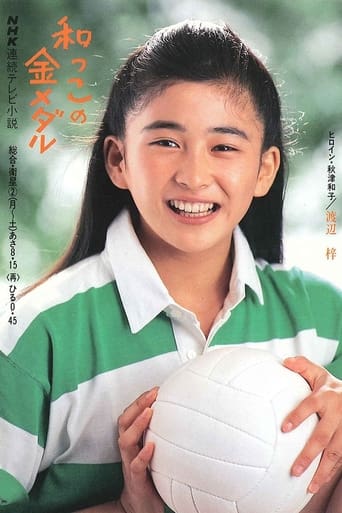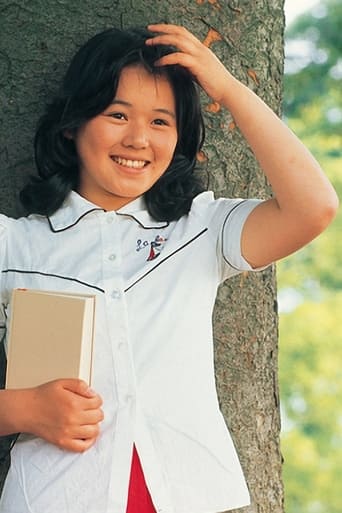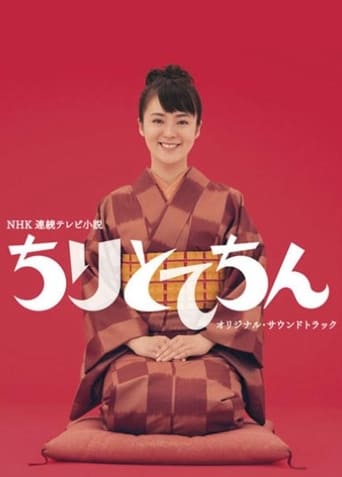キーワード Asadora
Haru yo koi 1994
A successful screenwriter looks back on her life when she learns her husband has cancer. A year-long series, starring Narumi Yasuda.
Kimi no na wa 1991
A story of a man and a woman who meet amid the Great Tokyo Air Raid in 1945.
Kita no kazoku 1973
The 13th NHK Asadora. Starring Youko Takahashi in a story about a brother and sister coming of age in Hakodate and Kanazawa.
Hatoko no umi 1974
A woman who lost her memory after experiencing the atomic bombing of Hiroshima.
Nobuko to Obachan 1969
The 9th NHK Asadora. Starring Naoko Otani as a young woman living with her grandmother.
Ashita Koso 1968
The 8th NHK Asadora. Starring Yumiko Fujita in a family drama. The first Asadora filmed in color.
Mayuko hitori 1971
Kano is known as a "cocoon child" whose father is an agriculturist. Her mother disappeared when she was little and since then Kano has been wondering why her mother left her thus changing the shape of her life.
Hashiran ka! 1995
Set in Hakata, the series is about a young man who wants to play rock music even though his father expects him to follow him in making Hakata ningyou (a traditional Japanese clay doll). One of the few Asadora starring a male character.
Ai yori aoku 1972
The 12th NHK Asadora. Set in Amakusa, Kumamoto Prefecture, at the end of the Pacific War. Maki is the heroine, married to Shuichi who must go to war. She stays home and takes on the role of other war widows, managing business and a Chinese restaurant.
Tabiji 1967
The 7th NHK Asadora. Starring Tadashi Yokouchi in a narrative about an employee of the national railroad living through 50 years of modern history with his wife.
Akatsuki 1963
The 3rd NHK Asadora. Starring Shin Saburi as a professor who quits the university to become a painter.
Hiyokko 2017
The 17-year-old Yatabe Mineko grew up in a family of seven in a mountain village in northeastern Ibaraki Prefecture. Her father Minoru has gone to Tokyo to work in order to earn extra money. However, her life completely changes when her father does not come back for the New Year. Mineko asks her family to let her go to Tokyo to find him and promises to send money home. In the autumn of 1964, she and two childhood friends Tokiko and Mitsuo are hired to start working at a small factory in Tokyo’s working class neighborhood. After work each day, Mineko searches for her father and gets disheartened at times. Mineko overcomes challenges and starts to lay down roots in Tokyo as she experiences many meetings and farewells amid the laughter and tears with regulars, people of the shopping street, friends, and colleagues. But will she be able to find her father?
Amachan 2013
Amachan is the 88th 2013 NHK asadora written by Kankuro Kudo (Tiger and Dragon, Unobore Deka). It's about Amano Aki (Nounen Rena), a 16 year old girl from Tokyo who goes to her mother's former home in Sodegahama, a fishing village in Kitasanriku, Iwate prefecture for the summer break. She falls in love with the sea and its people, and decides to stay on to become an Ama (women divers who fetch clams and sea urchins for tourists) just like her grandmother, Natsu (Miyamoto Nobuko). Her decision is welcomed wholeheartedly by Natsu and the other locals. However, her mother Haruko (Koizumi Kyoko) does not like the idea at first. She has a strained relationship with Natsu, and her extreme dislike of the sea, diving and the countryside is one of the reasons why she left her hometown 24 years ago. Eventually, she decides to stay in Sodegahama with Aki, considering that she is contemplating on getting a divorce anyway and does not want to go back to her husband in Tokyo. She also notices that it might be good for Aki for she seems livelier and happier in Kitasanriku than in Tokyo. The road towards becoming a full-fledged Ama-san is tough for Aki as she encounters tests and hurdles. One day, a video of her as an Ama gets uploaded in the city's tourism website, transforming an ordinary high school girl into an overnight Internet sensation. Suddenly she is called upon to use this opportunity to attract tourists to a city suffering from depopulation.
Jun-chan's Cheering Song 1988
The year is 1947, August. Ono Junko's family is being evacuated to Wakayama and the father is going to war. A few years later, the father has returned from Manchuria but he also brought a boy that had been abandoned by his mother. The boy is Yuta and the family will adopt him.
Imo Tako Nankin 2006
The series takes place in 1962 Osaka. Hanaoka Machiko, 37, is single and works at a hardware store in Osaka City while doing literary work. One day, she falls ill due to overwork and falls in love with Tokunaga Kenjiro, the doctor who examines her. Kenjiro and Machiko marry. But Kenjiro, who lost his first wife to illness, lives not just with his five children, but his brother, sister, and parents. In a comical and heart-warming way, the drama depicts Machiko's struggle with the new family while pursuing her career as a novelist.
Niji 1970
Starring Yōko Minamida as a woman who supported her family during and after World War II. All episodes are missing from the NHK archives, though a brief clip does survive as part of a contemporary news segment documenting the drama's production.
Ohanahan 1966
The 6th NHK Asadora. Starring Fumie Kashiyama as a woman, born in the Meiji era, who raises a family by herself.
Wakko no kin medaru 1989
The 43th NHK Asadora about a female volleyball player who helps out the local community. Starring Azusa Watanabe.
Mizuiro no toki 1975
The 15th NHK Asadora. Starring Shinobu Otake in a story about a young woman striving to become a doctor and her mother, who is a nurse. The first six-month Asadora. Average rating of 40.1%.
Chiritotechin 2007
The 77th NHK Asadora is Chiritotechin. Location includes Fukui prefecture. This renzoku is about Wada Kiyomi (referred to as Kiyomi-B), a girl brought up in Fukui who moves to Osaka in search of her soul. In Osaka, Kiyomi-B becomes enchanted with rakugo, a Japanese traditional form of comic storytelling, and pursues a career in rakugo. In the summer of 1982, Kiyomi-B and her family move to Obama of Fukui, her father's hometown. Kiyomi-B's grandmother and uncle welcome the family, but Shotaro the grandfather does not allow Masanori to take over the Wakasa lacquer chopsticks making. One day, Kiyomi-B listens to rakugo at Shotaro's factory and becomes fond of it. Shotaro and Kiyomi-B become close through rakugo.

